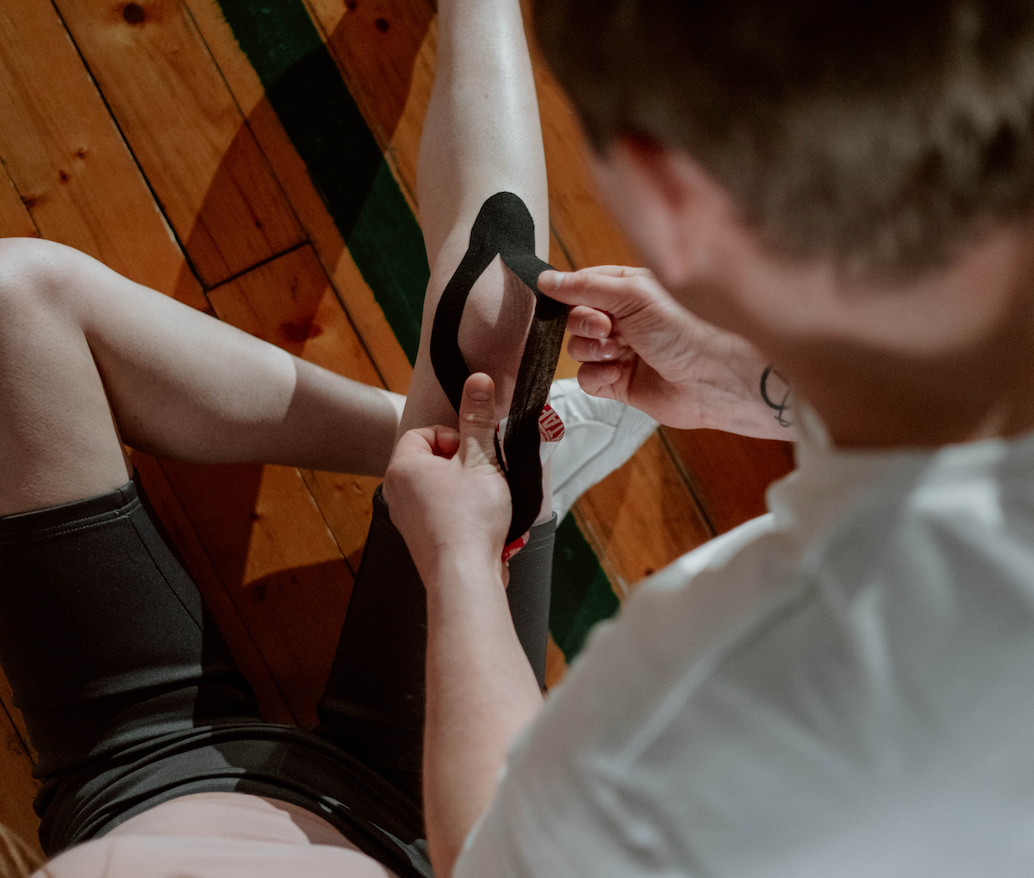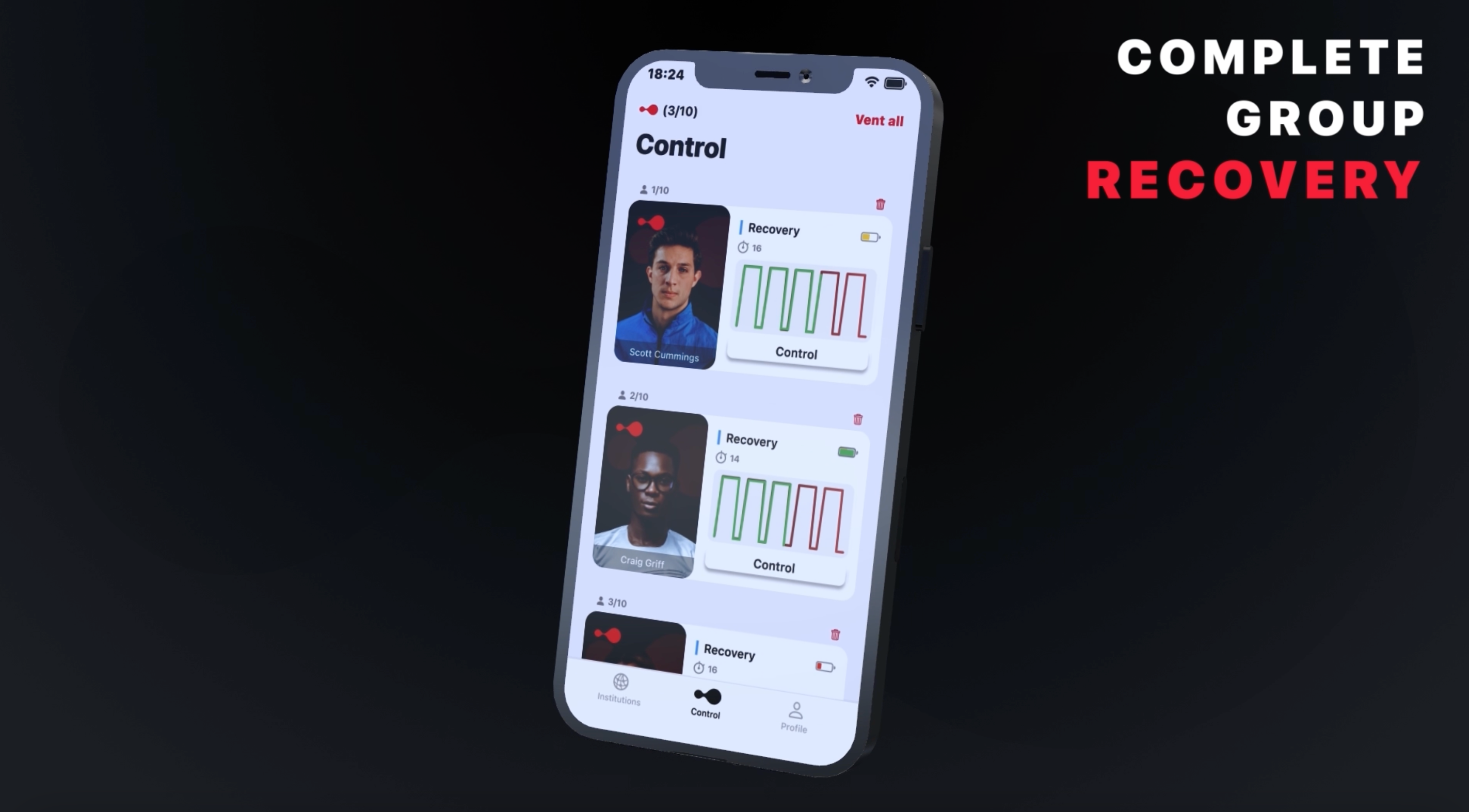Introduction:
Tendinopathy is an overuse injury classified by localized tendon pain and is often associated with histopathological changes within the tendon. Currently, the most effective strategy in the management on tendinopathy is a structured and progressive therapeutic exercise program. While there remains much speculation about the most effective form of exercise to improve tendinopathy, heavy loading >70% 1RM appears necessary to trigger tendon remodelling (Bohm et al 2015). However, individuals suffering from tendinopathy often experience pain with loading and are unable to load the muscle-tendon unit sufficiently enough to stimulate an adaptation. Consequently, localized muscle weakness is often seen as both a symptom and a cause of many common tendinopathies. Blood flow restriction training (BFR) has evolved as an effective training strategy eliciting changes in muscle mass and strength using remarkably low training intensities (What is blood flow restriction training?). It is often used in clinical populations who seek the benefits of intensive exercise, but are contraindicated to high-intensity resistance training. The vast majority of research exploring potential benefits of BFR have been conducted in skeletal muscle tissue, however emerging evidence suggests it may have a role to play in both tendon and bone health.
BFR and tendon adaptation:
A healthy tendon is a stiff tendon. Tendons respond to high intensity loading by becoming stiffer. They achieve this by increasing the number of crosslinks present between adjacent collagen fibres, and through changes in the composition of the tendons extracellular matrix. Historically, heavy loading has been considered an essential component of tendon rehabilitation programmes. However, recent evidence from Centner et al. (2019) demonstrated comparable changes in Achilles tendon properties using low-intensity resistance exercise combined with BFR. This research demonstrated a 7.8% increase in tendon cross-sectional area and a 36.1% increase in tendon stiffness over a 14-week training period. These findings are comparable to a second group that used a common high-intensity resistance training method, and are similar to those observed in other tendon-based studies. While the exact mechanism underlying the effect of BFR on tendon adaptation remains unknown, a cell culture based study has demonstrated that hypoxia (a lack of oxygen supply common to BFR) may stimulate the proliferation of tendon cells and be an effective strategy to improve rates of collagen synthesis (Jiang et al., 2014).
BFR and the muscle-tendon unit:
In managing both reactive and degenerative tendon pain, there are often two primary strategies clinicians will use: change the symptoms and pathology within the tendon, and improve the strength of the corresponding muscle. Localized muscle weakness has consistently been identified as considerable risk factor in individuals with tendinopathy (O'Neill et al., 2019). Further, these individuals will often exhibit fear avoidance based movement strategies to stop from loading the painful tendon. For example, an individual with patella tendinopathy will often jump and land with a hip dominant movement strategy, avoiding knee flexion loads and pain within the patella tendon. Consequently, the muscle will often suffer from disuse maladaptation, becoming smaller and weaker, further contributing to the development of the original pathology. BFR training offers a strategy to strengthen the muscle with a lower applied load, while experiencing the physiological benefits associated with high-intensity resistance training. In the above mentioned study from Centner et al. (2019), the BFR training group with Achilles tendinopathy achieved significant increases in muscle cross-sectional area and maximal strength within the calf muscle.
BFR in the case management of tendinopathy:
The evidence for BFR training in the case management of tendinopathy remains in its infancy. A recent case-study report from Cudderford et al (2020) provides a detailed report of how BFR training can be used as an in-season management strategy in two decathletes suffering from diagnosed patella tendinopathy. In this report, the subjects completed two supervised and progressive BFR training sessions alongside their regular season athletics training over the course of a NCAA collegiate athletics season. They tracked the subjects symptoms, alongside measures of muscle strength and diagnostic images of the tendon. Over the course of a 10-week intervention the researcher was able to demonstrate considerable improvements in the athletes pain both during physical activity and at rest. These changes were achieved alongside improvements in all muscle strength testing scores and observed changes on imaging within the tendon to show reduced areas of reactivity. Within my own practice, I frequently use BFR training with the profession rugby union athletes that I coach, specifically those who are unable to follow our regular strength training programme either through injury and ongoing management (BFR and team sport). We have two current cases of ongoing patella tendinopathy and have successfully maintained in-season lower limb strength and optimized player availability through the use of BFR training techniques (Edinburgh Rugby and BFR). Using BFR has enabled us to continue to load these athletes throughout a European Rugby season and achieve improvements in strength, when other forms of resistance exercise may have been contraindicated.
The management of tendon pain is a complex and challenging process.
Final word:
The management of tendon pain is a complex and challenging process. Optimizing the loading protocol to optimize tendon function and improve muscle strength appears crucial to improving clinical outcomes. BFR training offers a unique training strategy to effectively load injured, or painful structures. Until recently the benefits of BFR were thought to be applied to skeletal muscle tissue, however more recent evidence suggests those benefits may extend to improving the structure and function of tendons.
References:
- Bohm, S., et al., Human tendon adaptation in response to mechanical loading: a systematic review and meta-analysis of exercise intervention studies on healthy adults. Sports Medicine - Open, 2015. p. 1-7. https://pubmed.ncbi.nlm.nih.gov/27747846/
- Centner, C., et al., Low-load blood flow restriction training induces similar morphological and mechanical Achilles tendon adaptations compares with high-load resistance training. Journal of Applied Physiology, 2019. 127: p. 1660-1667. https://pubmed.ncbi.nlm.nih.gov/31725362/
- Jiang, D., et al., Effect of young extrinsic environment stimulated by hypoxia on the function of aged tendon stem cell. Cell Biochemistry and Biophysics, 2014. 70: p. 967-973. https://pubmed.ncbi.nlm.nih.gov/24817591/
- O'Neill, S., et al., Plantar flexor strength and endurance deficits associated with mid-portion Achilles tendinopathy: The role of soleus. Physical Therapy in Sport, 2019. 37: 69-76. https://pubmed.ncbi.nlm.nih.gov/30884279/




Leave a comment
This site is protected by hCaptcha and the hCaptcha Privacy Policy and Terms of Service apply.